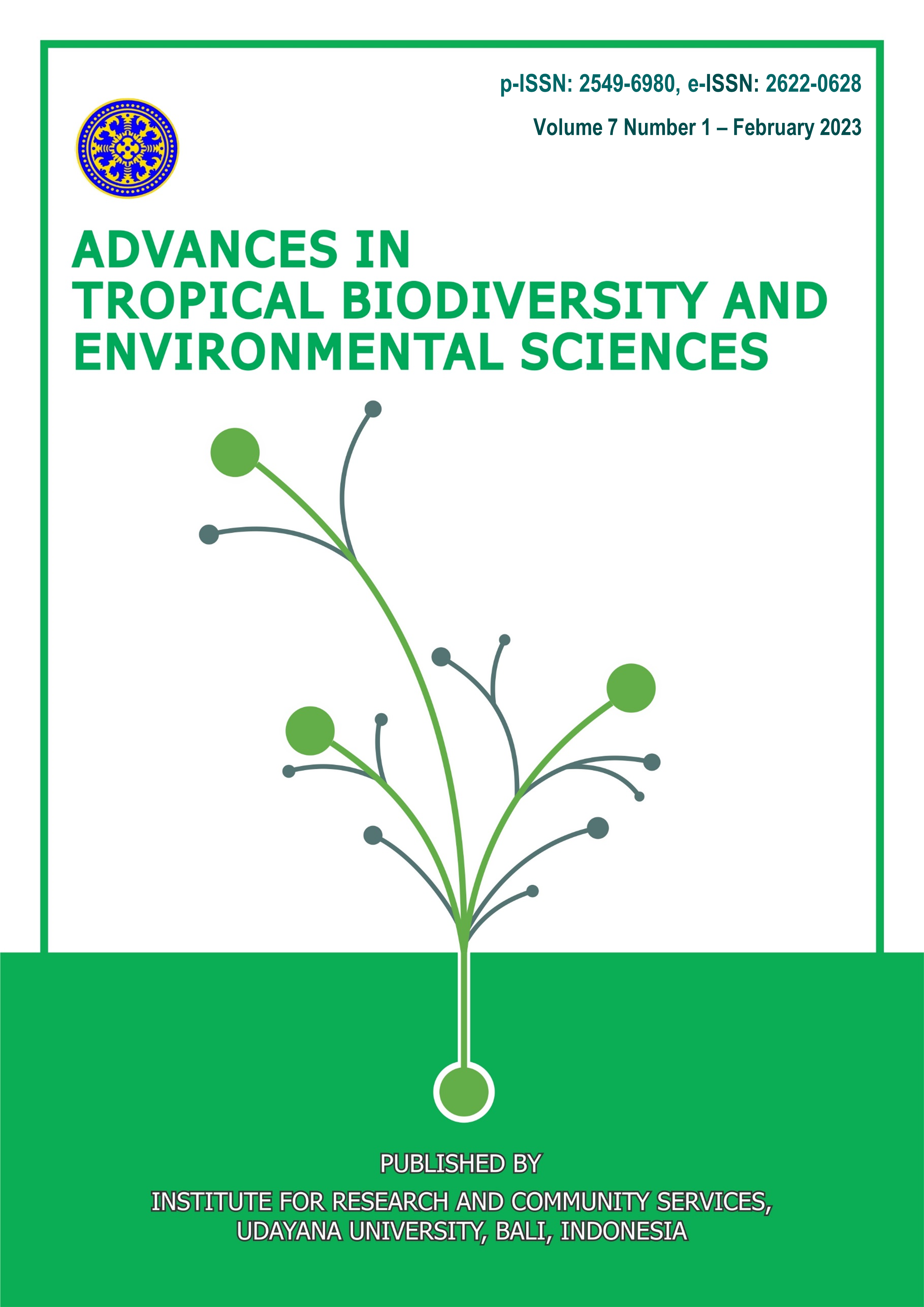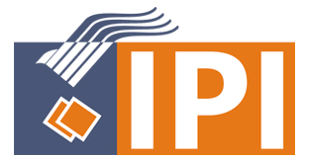Effect of Addition of Soybean Oil to Feed on Eggs Hatching of Dumbo Catfish (Clarias gariepinus)
Abstract
Many freshwater fish farming activities are carried out to meet the increasing demand for fish consumption. One commodity with high market demand is African catfish (Clarias gariepinus). The success of cultivation activities is the maintenance of broodstock is very influential on the eggs production. It is necessary to pay attention to the nutrients in the feed during cultivation. This study aims to determine the effect of adding soybean oil to feed on hatching eggs carried out at the Regional Technical Implementation Unit (UPTD) of Freshwater Aquaculture, Denpasar City. African catfish (C. gariepinus) were fed twice a day with feed mixed with soybean oil with three treatments namely 0%, 3% and 5% for five months. The fecundity and hatchability of eggs were calculated using a 10x10cm transect and analyzed using ANOVA analysis. Water quality observations were carried out once a week and ammonia at the end of each month. The results of this study obtained that fecundity values ranged from 214-546 grains/transect and egg hatchability values ranged from 0-62,62%. The results of observations of water quality showed a value that could still be tolerated by African catfish during the study. These results indicate that adding of 3% soybean oil to the broodstock feed of African catfish helps to increase the quality and quantity of hatching eggs.
Downloads
References
[2] Ardyanti R., Nindarwi D D., Sari I A., & Sari P D W. 2017. Manajemen Pembenihan Lele Mutiara (Clarias sp.) Dengan Aplikasi Probiotik di Unit Pelayanan Teknis Pengembangan Teknologi Perikanan Budidaya (UPT PTPB) Kepanjen, Malang, Jawa Timur. Journal of Aquaculture and Fish Health, 7(2), 84-89.
[3] Azizati, V.L., Sudaryono, A., & Yuniarti, T. 2015. Pengaruh Penambahan Kombinasi Omegasqua Dan Klorofil Terhadap Fekunditas, Daya Tetas Dan Kelulushidupan Larva Ikan Lele Sangkuriang (Clarias sp.). Journal of Aquaculture Management and Technology, 4(4), 136-140.
[4] Faradilla, D., Efrizal, & Rahayu, R. 2017. Pengaruh Penambahan Tepung Tauge Dalam Formulasi Pakan Buatan Terhadap Respon Kematangan Telur Tahap Akhir Ikan Lele Sangkuriang (Clarias gariepinus var. Sangkuriang). Jurnal Metamorfosa, IV(2), 256-262.
[5] Firmantin, I.T., Sudaryono, A., & Nugroho, R.A. 2015. Pengaruh Kombinasi Omega-3 dan Klorofil Dalam Pakan Terhadapa Fekunditas, Derajat Penetasan Dan Kelulushidupan Benih Ikan Mas (Cyprinus carpio, L). Journal of Aquaculture Management and Technology, 4(1), 19-25.
[6] Lingga, N., & Kurniawan, N. 2013. Pengaruh Pemberian Variasi Makanan Terhadap Pertumbuhan Ikan Lele (Clarias gariepinus). Jurnal Biotropika, 1(3), 114-118.
[7] Medinawati, N. S., dan Yoel. 2011. Pemberian pakan yang berbeda terhadap pertumbuhan dan kelangsungan hidup benih lele dumbo (Clarias gariepinus). Media Litbang Sulteng. 6(2) :83-87
[8] Olivia, S., G. H. Huwoyon., dan V. A. Prakoso. 2012. Perkembangan embrio dan sintasan larva ikan nilem (Osteochilus hasselti) pada berbagai suhu air. Bulletin Litbang. 1(2):135-144.
[9] Pramleonita, M., Yuliani, N., Arizal, R., & Wardoyo, S.E. 2018. Parameter Fisika Dan Kimia Air Kolam Ikan Nila Hitam (Oreochromis niloticus). Jurnal Sains Natural Universitas Nusa Bangsa, 8(1), 24-34.
[10] Pratama, M.A, Arthana, I.W., & Kartika, G.R.A. 2021. Fluktuasi Kualitas Air Budidaya Ikan Nila (Oreochromis niloticus) dengan Beberapa Variasi Sistem Resirkulasi. Current Trends in Aquatic Science, IV(1), 102-107.
[11] Rosalina, D. 2014. Analisis Kelayakan Usaha Budidaya Ikan Lele Di Kolam Terpal di Desa Namang Kabupaten Bangka Tengah. Maspari Journal, 6(1), 20-24.
[12] Sartika, R.A.D. 2008. Pengaruh Asam Lemak Jenuh, Tidak Jenuh Dan Asam Lemak Trans Terhadap Kesehatan. Jurnal Kesehatan Masyarakat Nasional, 2(4), 154-160.
[13] Sinjal, H. 2014. Pengaruh Vitamin C Terhadap Perkembangan Gonad, Daya Tetas Telur dan Sintasan Larva Ikan Lele Dumbo (Clarias sp). Budidaya Perairan Januari, 2(1), 22-29.
[14] Turyanti, A., & Chaerunnisa. 2017. Pendugaan Tingkat Keasaman Air Hujan Berdasarkan konsentrasi Pencemar Udara Ambien (Studi kasus : DKI Jakarta). Agromet, 31(2), 71-79.
[15] Wahyuningsih, S., & Gitarama, A.M. 2020. Amonia pada Sistem Budidaya Ikan. Jurnal Ilmiah Indonesia, 5(2), 112-125













